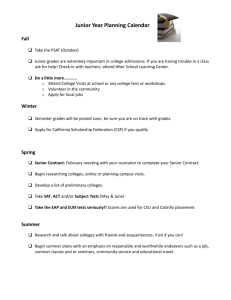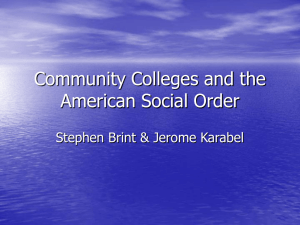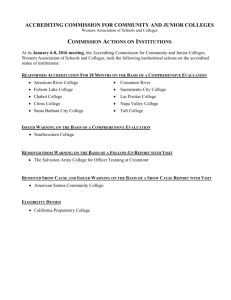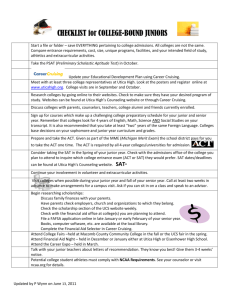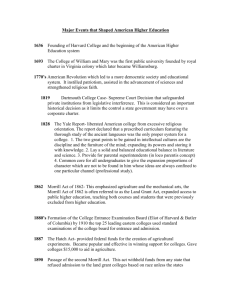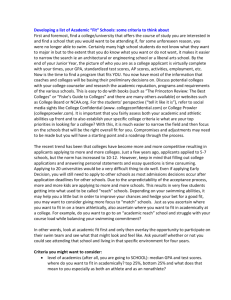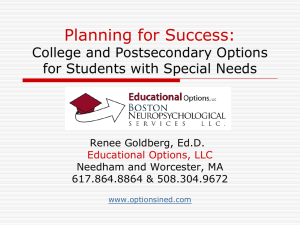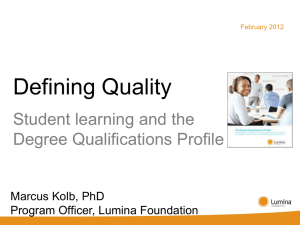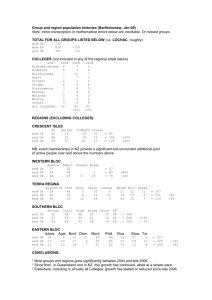guide-community-and
advertisement
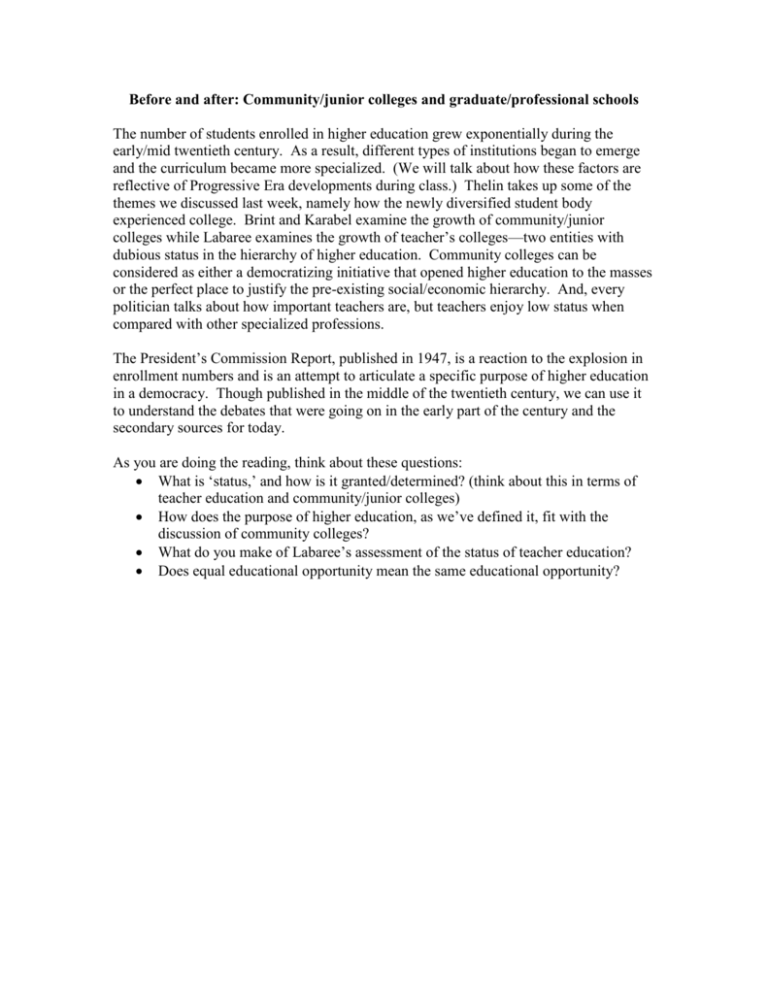
Before and after: Community/junior colleges and graduate/professional schools The number of students enrolled in higher education grew exponentially during the early/mid twentieth century. As a result, different types of institutions began to emerge and the curriculum became more specialized. (We will talk about how these factors are reflective of Progressive Era developments during class.) Thelin takes up some of the themes we discussed last week, namely how the newly diversified student body experienced college. Brint and Karabel examine the growth of community/junior colleges while Labaree examines the growth of teacher’s colleges—two entities with dubious status in the hierarchy of higher education. Community colleges can be considered as either a democratizing initiative that opened higher education to the masses or the perfect place to justify the pre-existing social/economic hierarchy. And, every politician talks about how important teachers are, but teachers enjoy low status when compared with other specialized professions. The President’s Commission Report, published in 1947, is a reaction to the explosion in enrollment numbers and is an attempt to articulate a specific purpose of higher education in a democracy. Though published in the middle of the twentieth century, we can use it to understand the debates that were going on in the early part of the century and the secondary sources for today. As you are doing the reading, think about these questions: What is ‘status,’ and how is it granted/determined? (think about this in terms of teacher education and community/junior colleges) How does the purpose of higher education, as we’ve defined it, fit with the discussion of community colleges? What do you make of Labaree’s assessment of the status of teacher education? Does equal educational opportunity mean the same educational opportunity?
